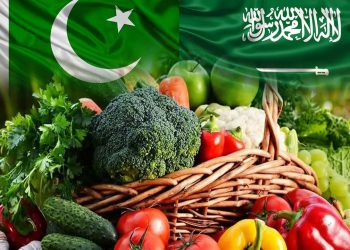The country has produced 34 percent less cotton this year as compared with the crop yield last season, reveals data from Pakistan Cotton Ginners Association (PCGA).
The final data for the crop year 2022–2023 reveal that Pakistan generated 4,912,069 bales of cotton, the lowest amount in about four decades, compared to 7,441,833 bales during the 2021–2022 season, a decrease of 2,528,764 bales or 34%.
To satisfy its annual demand for 15 million bales, the textile sector will have to import roughly 10 million bales. However, mill consumption for 2022–2023 has also been estimated at 8.8 million bales, the lowest level in more than 20 years, primarily as a result of serious problems with import funding.
Market sources claim that while the textile mills have so far acquired 4,605,449 bales from the local market, they have made import deals for 5.5 million bales. 7,332,000 bales were purchased by the mills from the local market last year.
Ginners say that they still have 301,720 bales in storage, compared to a 93,833 bale inventory from the previous year.
The massive decline in cotton arrival is attributed to flash floods and torrential rains that wreaked havoc on large areas of the country’s agricultural land during the previous monsoon, especially in the provinces of Sindh and Balochistan.
Interestingly, only 4,900 bales of white lint could be exported this year compared to 11,000 bales the year before, a decrease of over 69 percent, despite strong demand in foreign markets. Pakistan’s unprocessed cotton is primarily exported to the Philippines, Italy, Bangladesh, Greece, and France.
In terms of production by province, Punjab experienced a decline of over 32 percent from the previous year, producing 3,033,050 bales this season compared to 3,928,690 bales the year before.
The province of Sindh recorded a yield loss of over 46% year over year as lint production this year was 1,879,019 bales compared to 3,513,143 bales last year.
The production of cotton in Pakistan peaked at 14.1 million bundles in the 2004–2005 crop year. However, as the country’s per acre yield decreased to half of the crop productivity in other countries in the area, it fell to 7 million bales in 2020–21 and about 9.45 million bales in 2021–22.
A recent meeting of the Economic Coordination Committee (ECC) approved Rs8,500 per 40kg as the intervention price on a summary provided by the Ministry of National Food Security and Research to entice growers towards the crop. The ECC expressed concern over the continuing decrease in cotton production and acreage over the years.
Pricing
The ministry told the ECC that meetings with all interested parties, including the provincial governments, growers, and cotton associations, were conducted in January and February in order to develop a cotton intervention price proposal.
Stakeholders advocated for tying the cotton intervention price to the import parity price in accordance with the strategy implemented over the previous two years, including the All Pakistan Textile Mills Association.
The ECC constituted a cotton price review committee with the mandate to review market prices and propose intervention on a fortnightly basis.






